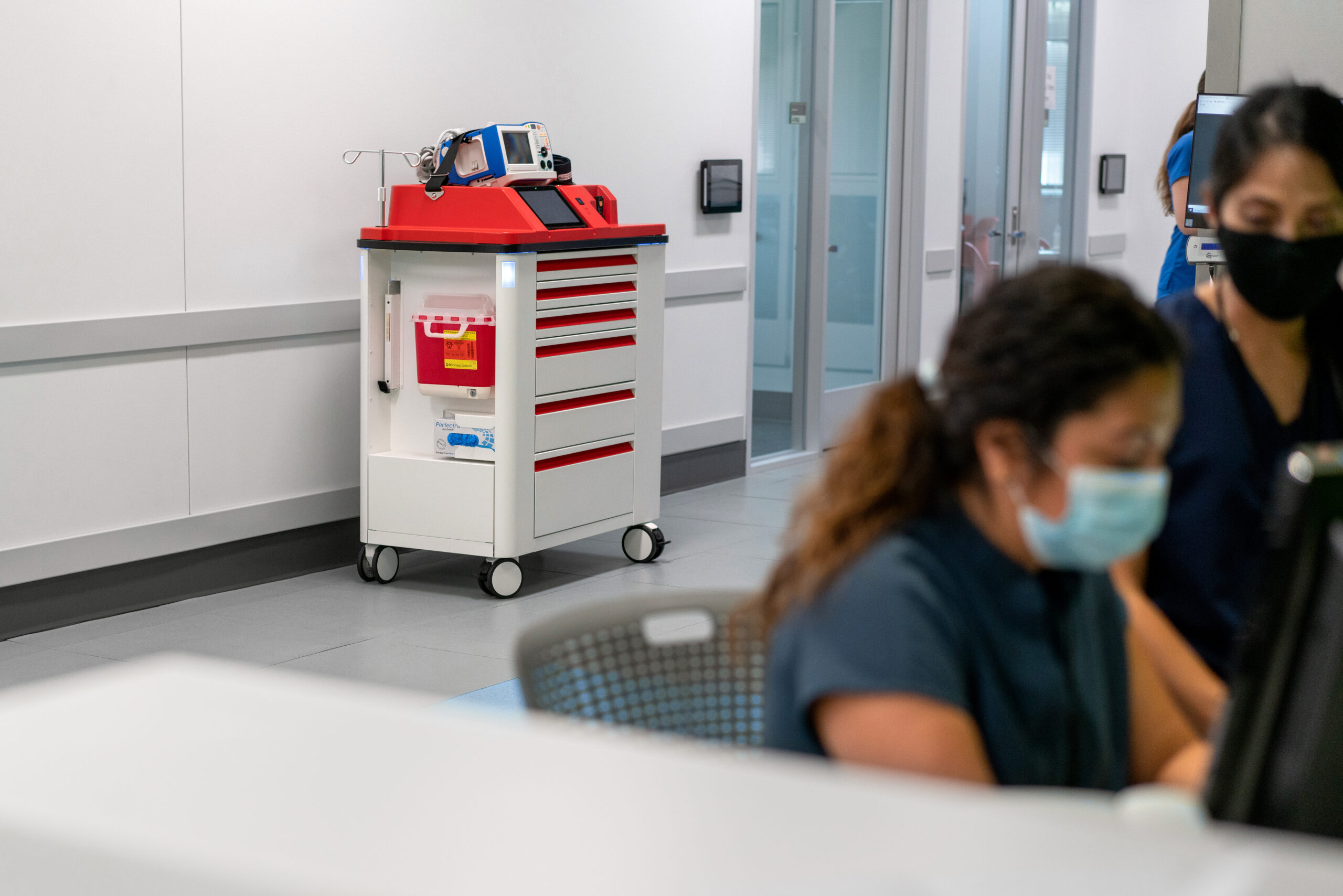key takeaways
- Crash cart checks are an essential — but often error-prone — safety measure at hospitals today.
- Standardization, automation technology, and continuous quality improvement are 3 strategies that can help hospitals improve crash cart safety and reduce risk.
Welcome to the second installment of our 2-part series on crash cart checks. In part 1, we set the foundation: why crash cart checks are essential (and how to communicate their importance to staff), how often they should occur, and what to include in a written plan for crash cart maintenance.
Now in part 2, we’ll turn to optimization and reducing risk. The reality is that having a solid crash cart maintenance plan in place is only half the battle. Even with the best-laid plans, many hospitals still struggle with manual error and oversight in crash cart checks. And these mistakes can be costly, leading to common problems like missing or expired medications, damaged or malfunctioning equipment, and more.1
So what can hospitals do to reduce risk? Keep reading to learn essential strategies hospitals can use to reduce crash cart check risk: standardization, automation, and continuous quality improvement.
Standardize
Most crash cart tasks are manual and laborious at hospitals today, making them ripe for error. Reduce this risk by standardizing wherever possible:
- Use cart checklists to ensure consistency and reduce oversights.
- Simplify crash cart checks2 by standardizing the supplies/medications on each cart, how they are labeled, and the way they are organized on the cart. Of course, it may not be realistic to do this for every cart in the hospital. Units may serve different patient populations (and therefore have different needs). That said, templates can usually be created per unit, and basic supplies common to all crash carts can be standardized throughout.
By eliminating unnecessary variation, staff members are able to perform crash cart checks quickly, more efficiently, and most importantly — with less room for error.
Automate
Unfortunately, no amount of standardization will completely eliminate human error inherent in manual crash cart checks. That’s why it is crucial for hospitals to consider how improved technology can better streamline and automate crash cart checks.
Some hospitals use supplemental technology solutions for their crash carts (e.g., Kit Check, MedEx Tray Safe, OnTraq) to help manage inventory and track expiration of medications. But more comprehensive solutions, like The EMMITTM Emergency Care System from Nuvara®, take it a step further by offering:
- Status indicator lights on the cart that enable responders to see at a glance if a cart is fully checked and code-ready, reducing unwanted surprises during an emergency
- Electronic monitoring of crash cart access that instantly alerts the hospital when cart tampering occurs and which specific drawers were accessed
- Automated upcoming expiration notices and searchable cart inventory to easily remove expired or recalled medications that could adversely affect patient safety
- Built-in tracking, notifications, and reporting to increase oversight of cart checks
- Electronic cart checklists to increase awareness of missed cart checks or unresolved issues with cart contents

Gather data to improve
Lastly, regularly tracking and gathering data on crash cart checks and safety is crucial. Without this information, hospitals won’t know where their weak spots are and how they can improve. We recommend a two-pronged approach:
Part 1: Perform risk assessments on randomly selected crash carts
Every month, randomly select 5% of your hospital’s crash carts and conduct a risk assessment. The advantage of this approach is that it’s proactive, ideally helping your hospital identify gaps before they become an issue during a code. Here are sample checks to consider including:
- Are all medications and supplies within expiration dates?
- Is the cart clearly labeled with the next medication and supply item to expire?
- If breakaway tags were used, is the integrity of the tag intact? Does the number of the tag match the log?
- If any cart tampering occurred, was hospital policy followed until the time medications were restocked?
- Is the ECG machine functional?
- Were cart checks performed per policy during the past 90 days?
Part 2: Capture crash cart safety data after every code
If your hospital is already doing hot debriefs after every code (which we recommend), this information can easily be gathered then. At every debrief, ask the team if there were any issues with crash cart resources: missing or expired items, equipment that wasn’t charged, cart not in its usual location, etc. Then, your hospital can compile the results in aggregate to get a better sense of what crash cart safety issues might be falling through the cracks — and how to address those gaps moving forward.
The bottom line
Having a strong crash cart maintenance plan in place is an essential first step, but it’s not enough. To error-proof crash cart checks, your hospital needs to implement strategies like standardization, automation, and continuous quality improvement to reduce risk and decrease manual error.
RELATED ARTICLES
Nuvara® is here to help
Nuvara’s EMMIT® Emergency Care System and CoDirector® Resuscitation Software can help your hospital streamline and automate crash cart checks, ditch paper checklists, and reduce error.
References
-
The Joint Commission. Crash-cart preparedness. Quick Safety. 2017 Apr;32:1-3. Available at: Quick Safety 32: Crash-cart preparedness | The Joint Commission
-
The Joint Commission. EC News, 2021 July; 24:7. Available at: pdf (jcrinc.com)






